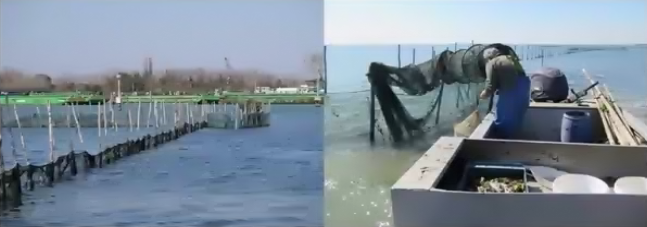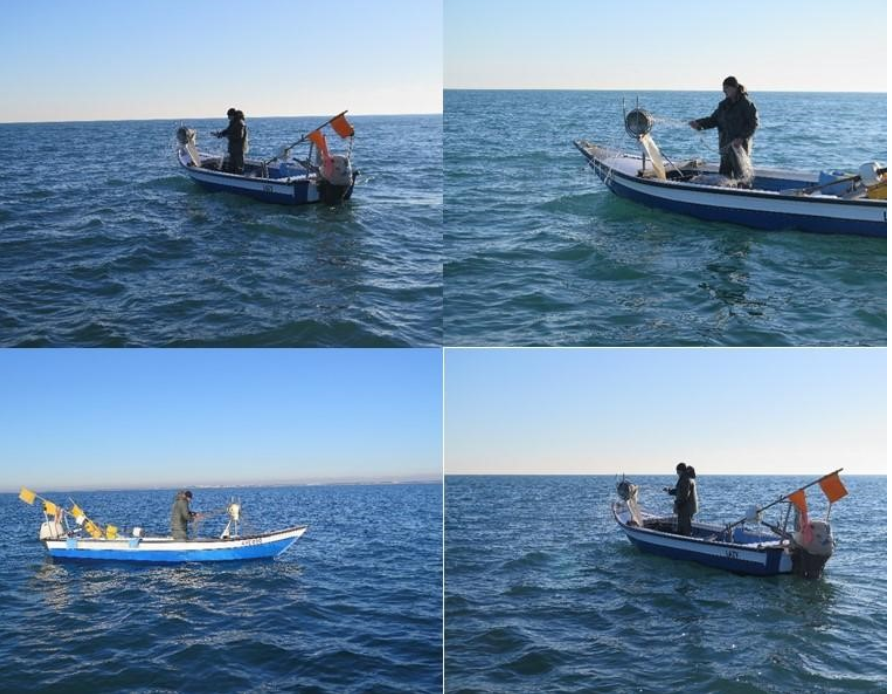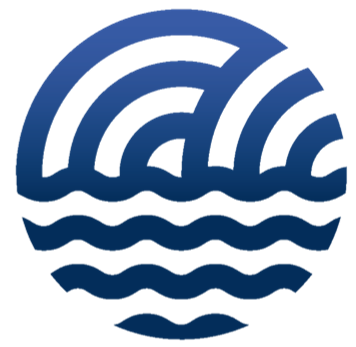biota
Type of resources
Topics
INSPIRE themes
Provided by
Years
Formats
Update frequencies
status
-

As part of the European MAELSTROM project, fish fauna sampling activities were carried out both at the coastal site (mussel farm) and at the lagoon site (Sacca Fisola) in collaboration with professional fishermen, using different types of nets for the two environments (sea and lagoon). In the coastal site (i.e. the mussel farm) different types of nets were employed in order to sample a wide range of ecological and size fish guilds. Given the presence on the bottom of numerous objects, the nets were placed in neighbouring areas with few or no obstacles in order to preserve the integrity of the nets and to conduct the sampling successfully. The reduced distance from the sampling area was considered suitable to provide a reliable picture of both benthic and pelagic fish species characterising the area. Sampling activities were carried out on February 22-23, 2022. Fish were identified according to their species. Moreover, the main morphometric parameters (length and weight) of each individual were recorded. Fish fauna sampling in the lagoon site was performed using particular fishing gear (fyke nets), locally used in the lagoon, positioned on the seabed of the shallow waters (maximum depth 1.8 meters). The gear was fixed to the seabed with poles. Ten fyke nets were placed within the sampling site close to the area where removal activities will take place. Sampling activities were carried out on March 20-22, 2022. Fish were divided according to their species and the weight was recorded for each individual. Abundance (number of individuals) and biomass (grams) were then standardized per effort unit. The data collected in both coastal and lagoon sites (number of individuals, species) were used to calculate three biodiversity indexes: species richness, Margalef index and Shannon index.
-

As part of the European MAELSTROM project, fish fauna sampling activities were carried out both at the coastal site (mussel farm) and at the lagoon site (Sacca Fisola) in collaboration with professional fishermen, using different types of nets for the two environments (sea and lagoon). In the coastal site (i.e. the mussel farm) different types of nets were employed in order to sample a wide range of ecological and size fish guilds. Given the presence on the bottom of numerous objects, the nets were placed in neighbouring areas with few or no obstacles in order to preserve the integrity of the nets and to conduct the sampling successfully. The reduced distance from the sampling area was considered suitable to provide a reliable picture of both benthic and pelagic fish species characterising the area. Sampling activities were carried out on February 22-23, 2022. Fish were identified according to their species. Moreover, the main morphometric parameters (length and weight) of each individual were recorded. Fish fauna sampling in the lagoon site was performed using particular fishing gear (fyke nets), locally used in the lagoon, positioned on the seabed of the shallow waters (maximum depth 1.8 meters). The gear was fixed to the seabed with poles. Ten fyke nets were placed within the sampling site close to the area where removal activities will take place. Sampling activities were carried out on March 20-22, 2022. Fish were divided according to their species and the weight was recorded for each individual. Abundance (number of individuals) and biomass (grams) were then standardized per effort unit. The data collected in both coastal and lagoon sites (number of individuals, species) were used to calculate three biodiversity indexes: species richness, Margalef index and Shannon index.
-

As part of the European MAELSTROM project, fish fauna sampling activities were carried out both at the coastal site (mussel farm) and at the lagoon site (Sacca Fisola) in collaboration with professional fishermen, using different types of nets for the two environments (sea and lagoon). In the coastal site (i.e. the mussel farm) different types of nets were employed in order to sample a wide range of ecological and size fish guilds. Given the presence on the bottom of numerous objects, the nets were placed in neighbouring areas with few or no obstacles in order to preserve the integrity of the nets and to conduct the sampling successfully. The reduced distance from the sampling area was considered suitable to provide a reliable picture of both benthic and pelagic fish species characterising the area. Sampling activities were carried out on February 22-23, 2022. Fish were identified according to their species. Moreover, the main morphometric parameters (length and weight) of each individual were recorded. Fish fauna sampling in the lagoon site was performed using particular fishing gear (fyke nets), locally used in the lagoon, positioned on the seabed of the shallow waters (maximum depth 1.8 meters). The gear was fixed to the seabed with poles. Ten fyke nets were placed within the sampling site close to the area where removal activities will take place. Sampling activities were carried out on March 20-22, 2022. Fish were divided according to their species and the weight was recorded for each individual. Abundance (number of individuals) and biomass (grams) were then standardized per effort unit. The data collected in both coastal and lagoon sites (number of individuals, species) were used to calculate three biodiversity indexes: species richness, Margalef index and Shannon index.
-

As part of the European MAELSTROM project, fish fauna sampling activities were carried out both at the coastal site (mussel farm) and at the lagoon site (Sacca Fisola) in collaboration with professional fishermen, using different types of nets for the two environments (sea and lagoon). In the coastal site (i.e. the mussel farm) different types of nets were employed in order to sample a wide range of ecological and size fish guilds. Given the presence on the bottom of numerous objects, the nets were placed in neighbouring areas with few or no obstacles in order to preserve the integrity of the nets and to conduct the sampling successfully. The reduced distance from the sampling area was considered suitable to provide a reliable picture of both benthic and pelagic fish species characterising the area. Sampling activities were carried out on February 22-23, 2022. Fish were identified according to their species. Moreover, the main morphometric parameters (length and weight) of each individual were recorded. Fish fauna sampling in the lagoon site was performed using particular fishing gear (fyke nets), locally used in the lagoon, positioned on the seabed of the shallow waters (maximum depth 1.8 meters). The gear was fixed to the seabed with poles. Ten fyke nets were placed within the sampling site close to the area where removal activities will take place. Sampling activities were carried out on March 20-22, 2022. Fish were divided according to their species and the weight was recorded for each individual. Abundance (number of individuals) and biomass (grams) were then standardized per effort unit. The data collected in both coastal and lagoon sites (number of individuals, species) were used to calculate three biodiversity indexes: species richness, Margalef index and Shannon index.
-

Soft bottom macrozoobenthic communities were characterized in Mussel Farm. In the coastal site, three stations were defined: CS1 (planned cleaning area and discontinued in September 2023), CS2 (control) and CS4 (cleaning area since september 2023). The protocol includes sampling by Van Veen grab (surface area of 0.1 m2, volume of approx. 17 L), taxonomic determination and quantitative analysis of the community matrix.
-
During the marine litter cleanup activities at the lagoon site, fouling organisms were sampled from a subset of the collected litter items. From each item, a 0.1 m² area was scraped from the surface exposed to epifaunal colonization. For the lagoon site, 5 items (4 tires and a metal frame) were subject to scraping on 26-27/09/2022.
-
During the marine litter cleanup activities at the Mussel Farm site, fouling organisms were sampled from a subset of the collected litter items. From each item, a 0.1 m² area was scraped from the surface exposed to epifaunal colonization. In the coastal site, samples of sufficient quality could be acquired during May-June 2023 cleaning operations, 2 plastic buoys retained near the seabed and a section of synthetic rope, all of them leftover aquaculture equipment.
-

Soft bottom macrozoobenthic communities were characterized in Mussel Farm. In the marine site, three stations were defined: CS1 (planned cleaning area and discontinued in September 2023), CS2 (control) and CS4 (cleaning area since september 2023). The protocol includes sampling by Van Veen grab (surface area of 0.1 m2, volume of approx. 17 L), taxonomic determination and quantitative analysis of the community matrix.
-

Soft bottom macrozoobenthic communities were characterized in Sacca Fisola. In the lagoon site, three stations were defined: LV1 (on the planned cleaning area), LV2 (control) and LV3 (additional, in case more information would have been required). The protocol includes sampling by Van Veen grab (surface area of 0.1 m2, volume of approx. 17 L), taxonomic determination and quantitative analysis of the community matrix.
-

Soft bottom macrozoobenthic communities were characterized in Sacca Fisola. In the lagoon site, three stations were defined: LV1 (on the planned cleaning area), LV2 (control) and LV3 (additional, in case more information would have been required). The protocol includes sampling by Van Veen grab (surface area of 0.1 m2, volume of approx. 17 L), taxonomic determination and quantitative analysis of the community matrix.
 CNR-ISMAR
CNR-ISMAR